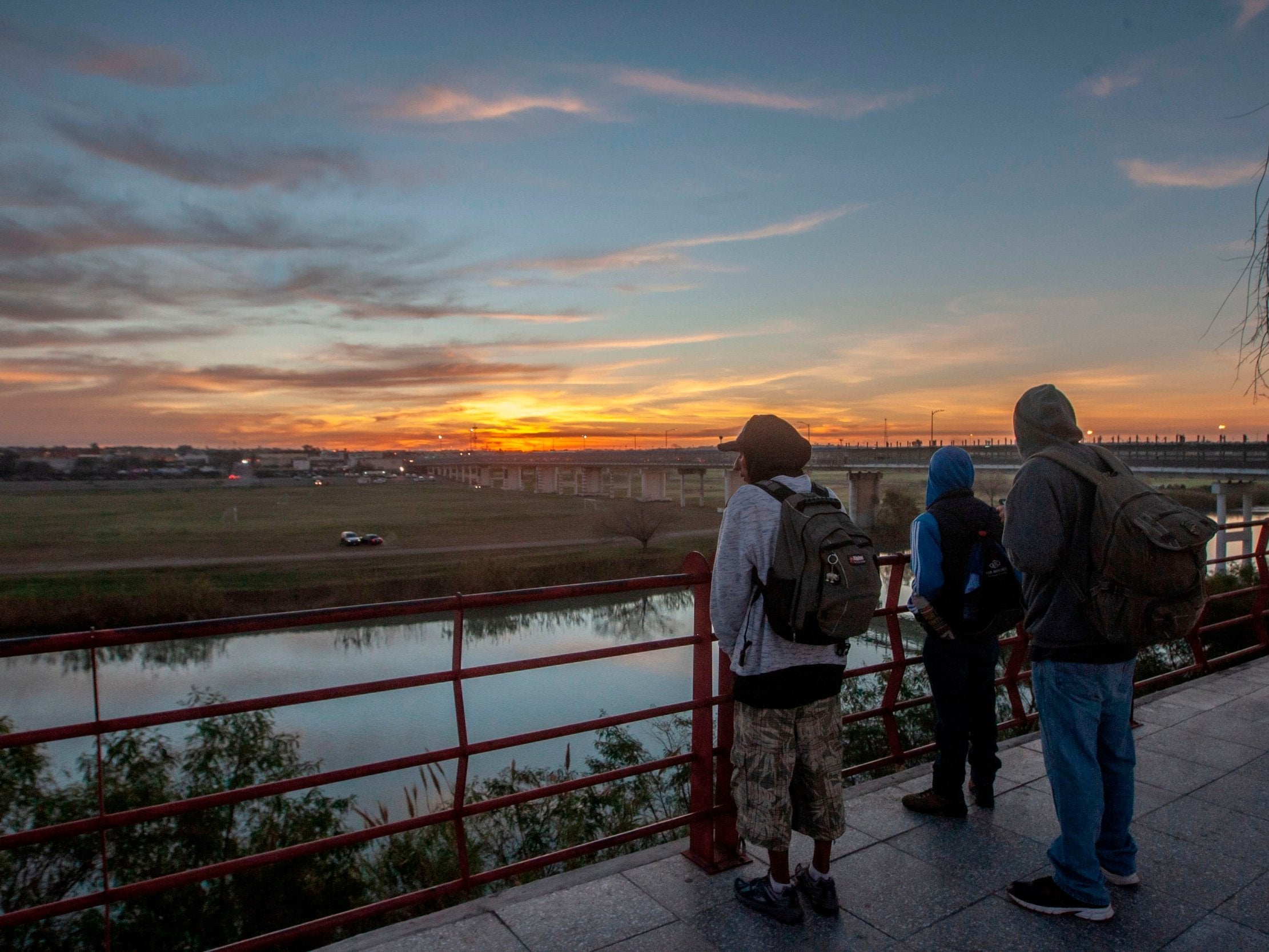'They're not listening. They haven’t asked us’: What Texas border sheriffs think about the wall Trump is threatening the US Constitution to build
Exclusive: One sheriff says his deputies found the bodies of eight migrants who tried to cross into the United States last year. They didn't need a wall to stop them


In the 100 miles or so of border land separating the US and Mexico in Hudspeth County, Texas, sheriff Arvin West says maybe half of it could do with the border wall that Donald Trump has threatened the American constitution to build.
The desert county occupies an area in the western portion of the Lone Star State the size of Qatar, and is defined on the south by the winding Rio Grande that cuts in part through desert mountains and jagged cliffs surrounded by miles of desolation.
West knows that immigrants sometimes try to illegally cross through those treacherous areas – his deputies found eight or nine bodies just last year. Even so, he says that a border wall would have little impact. There’s a natural barrier that’s all but impassable.
But it’s not as though he and other border sheriffs don’t think physical barriers could help elsewhere. The problem is that Washington politicians have been proposing solutions for years that ignore the perspective from the ground, and how concerns on one part of the border might differ from those in a portion thousands of miles away.
“They’re not listening to us. They haven’t asked us to begin with,” says West, a Democrat who has been in law enforcement since 1983 and a sheriff in Hudspeth since 2000. He says one thing he would like to see more of is manpower and resources in his county. “I’ve been to Washington 20-something times. I started going when Bush was in office and they’re just not listening.”
He believes both Democrats and Republicans share the blame. “It doesn’t make a shit of difference who is in office,” he says. “They’re not going to listen to us. They don’t care to listen to us.”
Since 1994, barriers and fencing have been built along nearly 700 of the 1,933-mile border the United States shares with Mexico.
The effort has spanned Democratic and Republican administrations, with the modern portions having been built following the 2006 passage of the Secure Fence Act during the administration of George W Bush that extended into the administration of Barack Obama.
Much of the fencing and walls that have been built run along the Arizona, California and New Mexico borders. The largest remaining part of the US-Mexico border that remains without walls lies in Texas.
But, as Washington has considered building the president’s promised border wall – first in congress, and now through a presidential emergency declaration that has been met with considerable opposition – several border sheriffs tasked with keeping their counties safe in Texas told The Independent that they feel they have been given little say in the matter.

Support free-thinking journalism and subscribe to Independent Minds
Val Verde county sheriff Joe Frank Martinez, who oversees a county that shares roughly 110 miles of border, says that he sees a manpower and technological deficit. Much of his county is rural, he says, which makes it cost prohibitive and difficult to build a wall or patrol regularly. There’s a wall along 1.8 miles of border that cuts through a residential area, and it helps, he says. But, in other portions, a natural canyon is all you need to keep someone from simply prancing across the border.
“I think that before people start, before money gets thrown at the border issue or the border crisis, I think that there has to be an evaluation done as to what is needed and where. And then take steps to implement the need,” Martinez says.
He continues: “The border sheriffs would like a seat at the table.”
In justifying the wall and fencing he wants to build, Trump has pointed to what he has described as a crisis along the US-Mexico border. And there is something brewing south of the border: The most recent statistics available from US Customs and Border Protection show that illegal crossing at the border spiked dramatically last month compared with the same period in 2018.
All told, more than 76,000 migrants crossed into the US last month, with 87 per cent of those coming in between points of entry. At that same time, the number of large groups – 100 or more people – arriving at border patrol outposts in the middle of the desert also jumped, with 70 such groups coming across last month compared with just two during the same period two years ago.
But the president’s approach to fixing the problem has been met with considerable criticism, and concern that he is subverting the constitutional authority of congress to spend money after the group explicitly left out border wall funding in recent budget appropriations.
That concern has led four or more Republican senators to say they might vote in favour of a resolution to terminate the emergency declaration – a vote that would likely force Trump’s first veto of his presidency. It appears unlikely the veto would be overruled.
But even former border patrol officials have expressed concerns with the specific plan as well. Gil Kerlikowske, a former commissioner for US Customs and Border Protection, said that building a wall along the entire US border, as the president has championed in his rhetoric previously, would be unnecessary.
The Rio Grande is “a river, and depending on the time of year it can be ankle deep or it can be raging. It changes direction. There’s agricultural property on both sides of the river. And so some type of fencing or wall there would be incredibly difficult to build and how far away form the border do you build it if you can?” Kelikowske says of the challenges and natural barriers. “Then you have to take a lot of property.”
Maverick County sheriff Tom Schmerber says that his vision for ramped up border security does not include a wall.
His county has a natural barrier – the river – and he says it is pretty effective. Instead, he would like to see a 21st-century response to the concerns the president has outlined, including technology to monitor the border and increased cooperation with partners on the Mexican side.
A wall is a piece of technology that Mr Schmerber says is outdated, if not an archaic tool.
“The drugs are coming in by the air, they’re actually coming in through the ports. It’s not the river like they’re saying,” he says. “Walls to me are not effective. Walls don’t talk. Another thing too is that the land owners would lose their properties in some areas because the wall would need to be on high ground.
“Anybody can cross a wall. They can dig a tunnel. Or they can go over,” he continues. “If people want to cross it, they’re going to cross it.”
Join our commenting forum
Join thought-provoking conversations, follow other Independent readers and see their replies
Comments
Bookmark popover
Removed from bookmarks